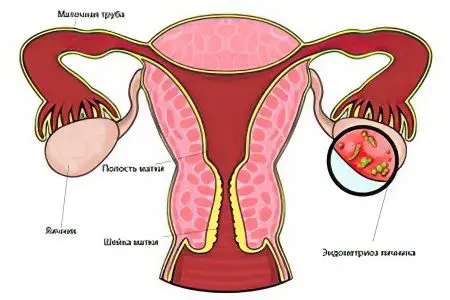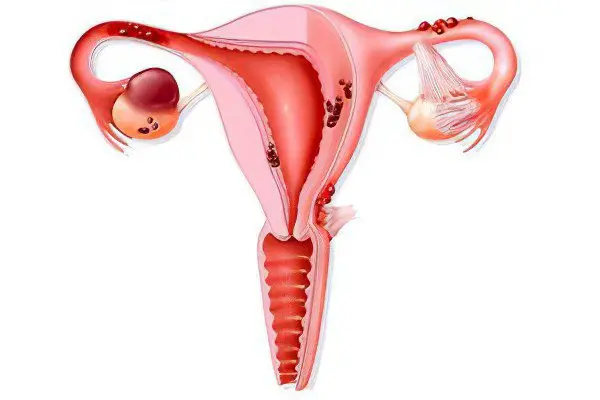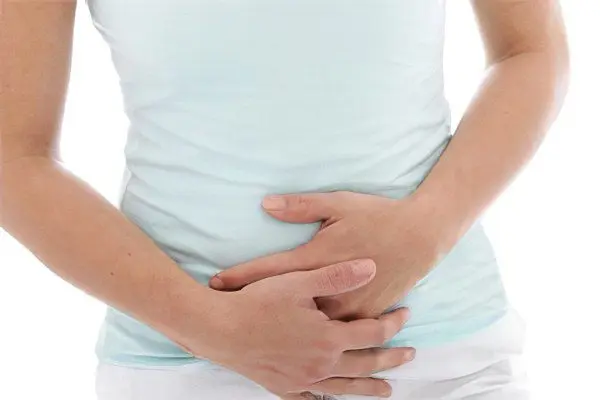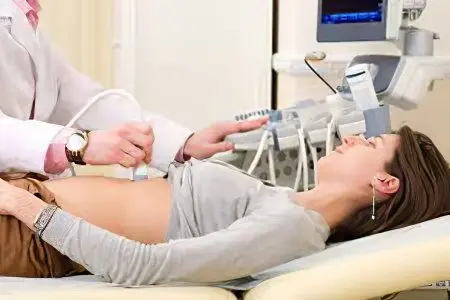Contents

Cells of the inner lining of the uterus with endometriosis migrate to the fallopian tubes, ovaries, intestines, bladder, kidneys, lungs, eyes. These are hormone-dependent formations, therefore, during menstruation, they begin to bleed in the same way as the endometrium of the uterus. In many pathological foci of endometriosis, the blood cannot find a way out, it accumulates and forms a cavity – a cyst. The contents of this cavity decompose, the cyst increases with each menstruation, causing severe pain to the woman.
Endometriosis of the ovary is the most common type of this disease. It is registered in 35% of patients who go to the doctor with complaints of gynecological problems. The main age category of the diseased is women 22-45 years old. The latent (hidden) form of pathology occurs even in adolescent girls 10-14 years old – in about 5-10% of cases. The absence of symptoms greatly complicates the diagnosis of ovarian endometriosis.
Classification of stages of the disease

Mentions of endometriosis are found in the papyri of the ancient Egyptian priests. At the present historical stage, there has been an increase in the incidence of endometriosis. Every third woman undergoing a diagnostic examination for infertility has ovarian endometriosis. Over time, pathological foci are transformed into endometrioid cysts.
This form of the disease belongs to the group of genital endometriosis, as it affects the reproductive organs. Such dysfunction of the ovaries leads to a violation of the contractility of the fallopian tubes, an imbalance in the functioning of the endocrine glands.
Degrees of ovarian endometriosis:
I. On the surface of the ovaries, as well as on the peritoneum, small flat single foci are found.
II. Endometrioid plaques and small cysts 3-4 cm in diameter are formed on the walls of the ovaries.
III. Adhesions appear that disrupt the patency of the fallopian tubes.
IV. Cysts on the ovary increase in size (up to 5 cm in diameter), adhesions spread to the intestines and bladder.
A characteristic feature of ovarian endometriosis is “chocolate cysts”. They got their name for the color and consistency of the internal contents, similar to liquid melted chocolate. This type is acquired by coagulated blood that has entered the cyst from vessels damaged by endometriosis. Replenishment of the cyst occurs during menstruation, so the growth of formations and the menstrual cycle are closely related.
In the later stages of endometriosis, a vast area of the ovary is filled with pathological foci. Cysts merge into nests or nodes on the surface of the gland, they are irregular in shape, filled with a tar-like thick liquid.
Clinical symptoms of ovarian endometriosis

For a long time, pathology may not give itself away. The first signs of the disease appear as the endometrioid cyst grows, as well as due to micro-ruptures in the foci of the disease. Depending on the stage of the disease, the phase of the menstrual cycle and the age of the patient, the symptoms of ovarian endometriosis may differ in different women.
The most characteristic manifestations:
Pain of a different nature. The symptom appears in 2/3 of women with a similar diagnosis. These are aching pulling pains in the lower abdomen, their frequent localization is 3-4 cm below the pelvic bones. With the spread of the disease, the pain syndrome is felt in the lower back and in the sacrum. With the advent of menstruation, the pain intensifies, acquires a cutting character, radiates into the vagina, into the rectum. In the later stages of ovarian endometriosis, the pain is so severe that the woman’s well-being noticeably worsens, vomiting appears. Sometimes the pain is felt during physical exertion or sexual contact. If the cyst ruptures, the woman feels a sudden sharp pain. At the same time, the muscles of the anterior abdominal wall tense. This situation requires immediate hospitalization.
Pelvic pain. The symptom is specific only for ovarian endometriosis. Unpleasant pain in the pelvic area may persist even after treatment. A woman cannot work, have sexual contacts, and socially adapt. If the pain is not relieved by specific therapy, the patient may be assigned a disability.
Infertility. In 50% of cases of infertility, it occurs against the background of ovarian endometriosis due to hormonal imbalance or due to a mechanical obstacle to the fertilization of the egg. Inflammation causes a violation of the secretion of hormones by the ovaries, that is, reproductive dysfunction. Mechanical infertility is provoked by adhesions and cysts that prevent fertilization and the movement of the egg through the tubes to the uterus.
Dysmenorrhea. Approximately one third of women with ovarian endometriosis have a pathological course of the menstrual cycle: severe pain, dizziness, weakness, subfebrile temperature, chills, nausea, vomiting (for more details: primary and secondary dysmenorrhea – causes, symptoms, treatment).
Dyspareunia. This term refers to discomfort during sexual contact, manifested by pain or discomfort in the external genital organs, in the small pelvis. This symptom occurs in 75% of women with ovarian endometriosis. If the process has gone too far, during intimate contact, a woman may pass out from intense pain.
Dyschezia (dyschezia). Due to muscle tension during bowel movements, pressure increases on the ovaries affected by endometrioid cysts. The woman experiences pain in the rectum and in the abdomen.
Constipation. This symptom is most often seen with endometriosis of the left ovary, marked by the formation of a large cyst. It restricts intestinal motility, causing constipation.
Bloating, frequent urge to urinate. Symptoms appear if the peritoneum is involved in the pathological process simultaneously with the ovaries.
Violations of the menstrual cycle. Menstruation becomes longer, the volume of secretions increases. Sometimes a few days before menstruation and 2-7 days after it, dark spotting appears. They are caused by an increase in the concentration of estrogen with a decrease in the production of progesterone.
Due to hormonal imbalance, women become whiny, irritable, their skin condition worsens, it becomes flabby, dry, or, conversely, acne appears. Sleep disturbances, depression, depression are observed.
Diagnosis of ovarian endometriosis

It is very difficult to make an accurate diagnosis with a visual examination. The only thing that can be seen is the dense and immobile ovaries, which can be soldered to the uterus and peritoneum into a single whole.
Laboratory diagnostic methods:
Complete blood count – the content of leukocytes may be increased;
Biochemical blood test for oncogenes (the norm can be exceeded one and a half times – up to 45 units);
Vaginal swab for genital infections.
Instrumental diagnostic methods:
Ultrasound examination, which allows diagnosing an endometrioid cyst;
Hysterosalpingography – X-ray of the uterus and ovaries;
Diagnostic laparoscopy to identify the adhesive process, determine the degree of damage;
CT, MRI to differentiate endometriosis from a malignant tumor.
When diagnosing endometriosis on an ultrasound monitor, the following signs are noted:
The contour of the ovary is deformed;
Its capsule is thickened and compacted;
Foci of the endometrium on the surface of the ovary have a homogeneous structure, clear boundaries;
Their shape is oval or round;
The cyst has a double contour, increased echogenicity, diameter up to 5-6 cm;
Intra-abdominal fluid accumulates in the small pelvis;
Around the ovary there are adhesions in large numbers.
Causes of ovarian endometriosis

Normally, when endometrial cells enter the pelvis through the fallopian tubes, macrophages of the immune system immediately destroy them. If this does not happen, the glandular cells are implanted in the tissue of the ovary and proliferate.
The reasons:
Genetic predisposition;
Low immunity;
Physical and mental overload;
Excessive insolation;
Transferred operations of the organs of the reproductive system (abortion, cauterization of cervical erosion, caesarean section);
Obesity;
Sedentary lifestyle;
Prolonged use of an intrauterine device;
Hormonal imbalance.
There are two theories for the development of endometriosis. According to one of them, endometrial cells are ejected during menstruation not into the cervical canal, but into the fallopian tubes, and from there into the peritoneum. They take root, multiply, forming separate formations. According to another theory, these cells die, but manage to transfer their properties to the cells of surrounding tissues.
Treatment of ovarian endometriosis

There are three treatments for ovarian endometriosis:
Surgery;
conservative therapy;
Combined method.
Conservative therapy is used in the initial stages of the disease in young women in the treatment of infertility. The main drugs are hormones used to suppress estrogen production:
COCs (Diana-35, Jeanine, Logest, Regulon) – the course of treatment lasts up to 9 months;
Gonadotropin antagonists (Buserelin, Zoladex) – the course lasts up to six months;
Levonorgestrel – the introduction of the Mirena intrauterine device, which produces microdoses of progesterone;
Medroxyprogesterone (Depo-Provera) – the course lasts up to 9 months;
Androgens for inducing amenorrhea (Gestrinone, Danazol) – the course lasts up to 6 months, there are side effects.
Additionally, a woman takes painkillers, NSAIDs, analgesics, absorbable and desensitizing agents.
With the ineffectiveness of conservative therapy, contraindications to the use of hormones, large formations, a diagnosed endometrioid ovarian cyst, a violation of the functioning of neighboring organs, surgical treatment is performed.
Methods of surgical intervention:
Enucleation – laparoscopic removal of small foci using a special probe that exfoliates the cyst membrane;
Laser or electrical coagulation – cauterization of endometriosis foci;
Laparotomy – removal of formations after dissection of the abdominal wall.
If there is oncological alertness, or the disease is rapidly progressing, the ovaries or uterus are removed along with the ovaries. A combined approach is a combination of two methods, when hormonal correction is performed after surgery. This is the “gold standard” of endometriosis treatment.
To fix the result, physiotherapeutic procedures are used (electrophoresis, radon baths, magnetotherapy, electrical nerve stimulation), as well as treatment with leeches. It is desirable that the woman received the help of a psychotherapist. Mud, massage, paraffin applications are contraindicated, as these methods stimulate the production of estrogen.
If the treatment did not end with the removal of the reproductive organs, as a result, the woman’s reproductive function is restored, she gets rid of the symptoms of endometriosis. Within a year after therapy, it is necessary to monitor the condition of the ovaries, donating blood for markers of the disease, and undergo ultrasound.
Endometriosis of the ovaries and pregnancy
With this form of the disease, there is still a considerable chance to restore fertility, although there is a risk of an ectopic pregnancy due to adhesions in the fallopian tubes. If conception has occurred, the disease will not affect the bearing of the child and his state of health. With a large size of the endometrioid cyst, the likelihood of its rupture is high, so it is advisable to remove the cyst before planning pregnancy.
Prevention

Distinguish between primary and secondary prevention. To prevent the development of ovarian endometriosis, you should visit a doctor if you experience menstrual irregularities, discomfort or pain, severe premenstrual syndrome.
Measures to prevent ovarian endometriosis:
Regular visits to the doctor;
Timely treatment of diseases of the reproductive organs;
Physical activity, exercise, physical education;
Maintaining optimal body weight, combating obesity;
Eating enough fruits and vegetables;
Prohibition of sexual contact during menstruation;
Refusal of abortions, use of hormonal contraception;
Prevention of stressful situations.
An interesting fact is that those women who use oral contraceptives to prevent unwanted pregnancy almost never get endometriosis.
The most effective strategy for the treatment of ovarian endometriosis is to treat the disease in the early stages. It is important to timely diagnose the appearance of endometrioid cysts and formations in order to successfully get rid of them.









